Modelling of draperies
Artists' Techniques
Draperies of different colours were modelled in different ways. Dark blue, orange and dark pink fabrics were painted in uniform hues, with folds defined by black lines, and decorative motifs painted in thin white lines. This gives them a rather ‘flat’ appearance compared with the light pink and light blue robes, which were modelled with gradations of colour to create the illusion of volume. On fol. 3r, the modelling is more three-dimensional and dynamic, but the gradation of colour is less delicate than on other folios.
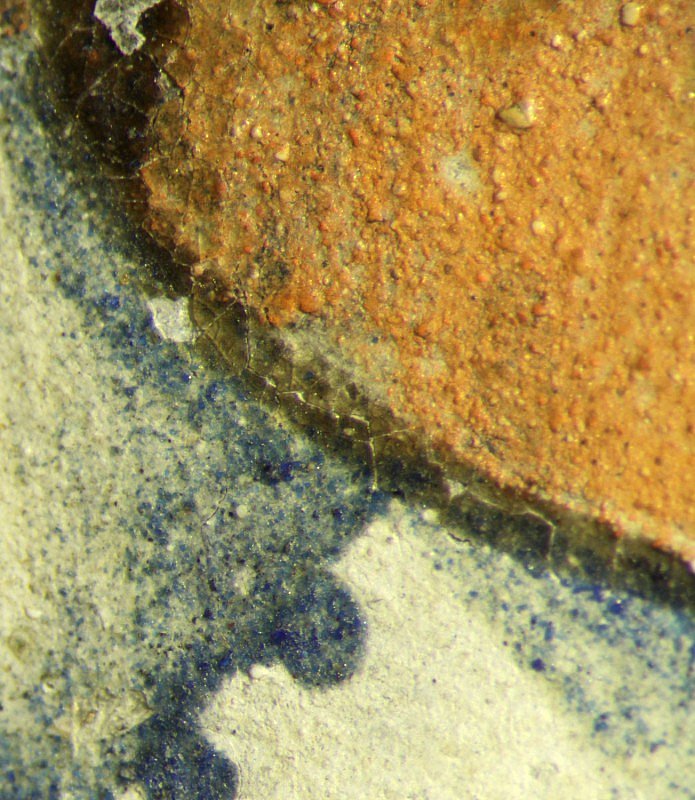
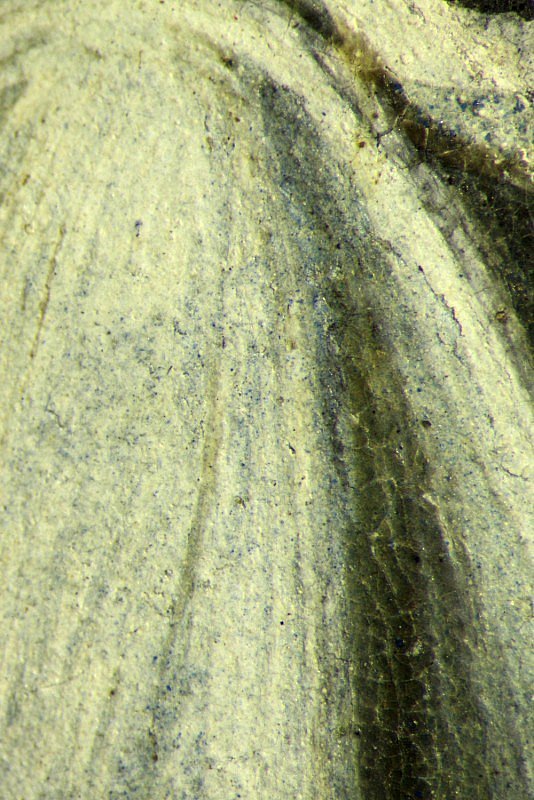
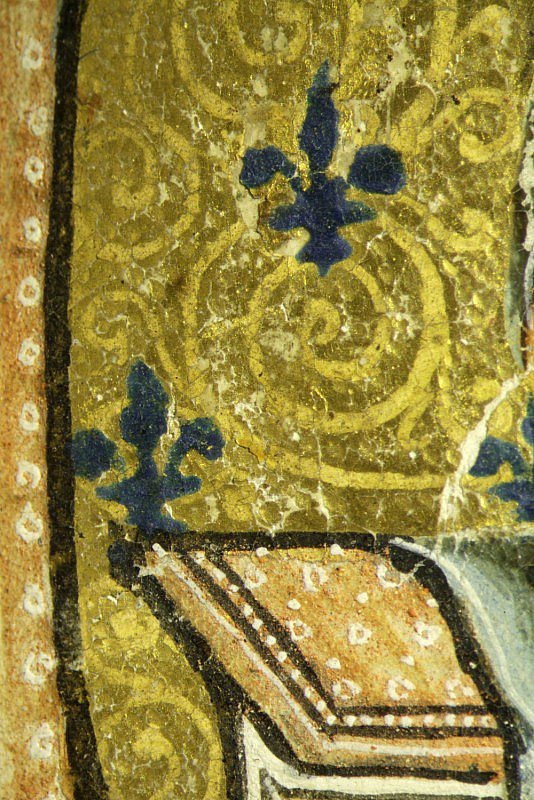
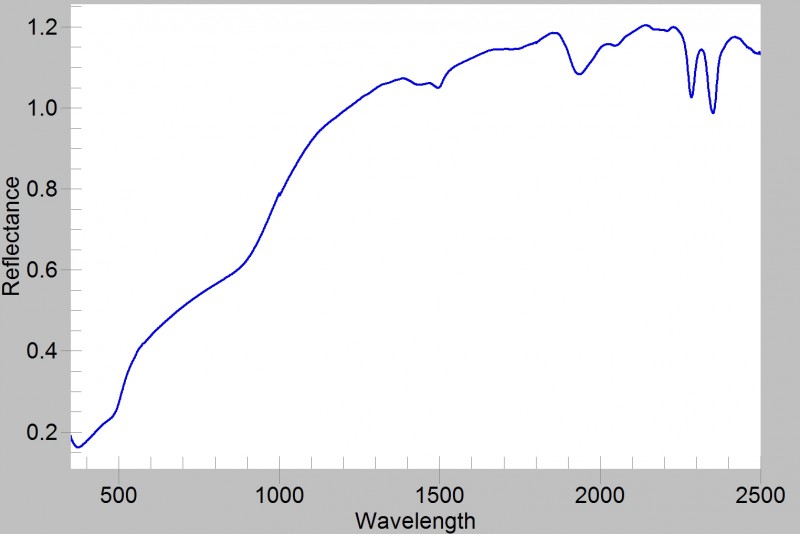

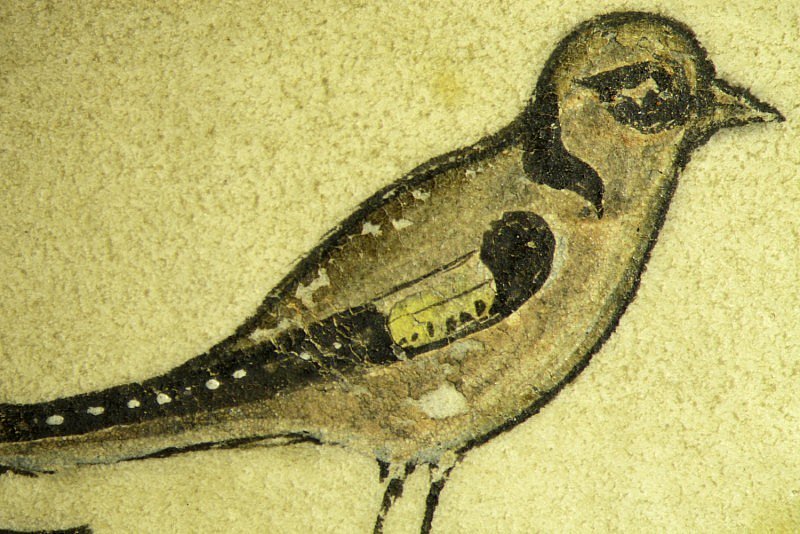
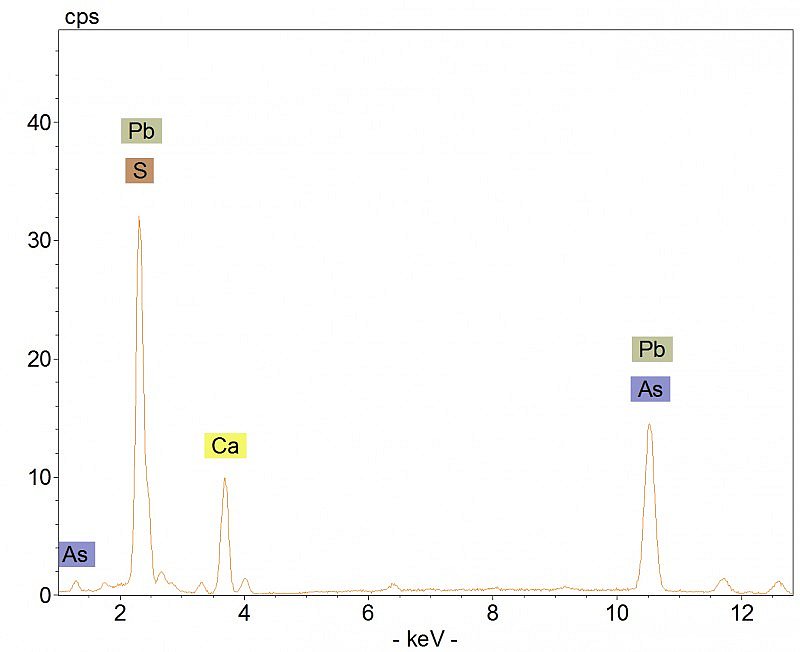
Historiated initial D with the Enthroned Virgin and Child (Hours of the Virgin, Matins)
The three-dimensional modelling of the Virgin Mary’s garments, with their multiple folds, distinguishes this initial from the more linear treatment of other draperies in the manuscript and suggests that this image was painted by a different artist. The materials employed also set this initial apart. These include coarser pigment particles (hotspot 1), a darkened organic shading on the Virgin’s mantle (hotspot 2), flesh tones containing lead white but no gypsum, and the use of shell gold for the decoration painted over the gilded background (hotspot 3). The border contains some pigments not found in the miniature: an organic red, used to obtain a red hue (hotspot 4) and a yellow arsenic sulphide pigment used in the wing of a bird (hotspot 5).